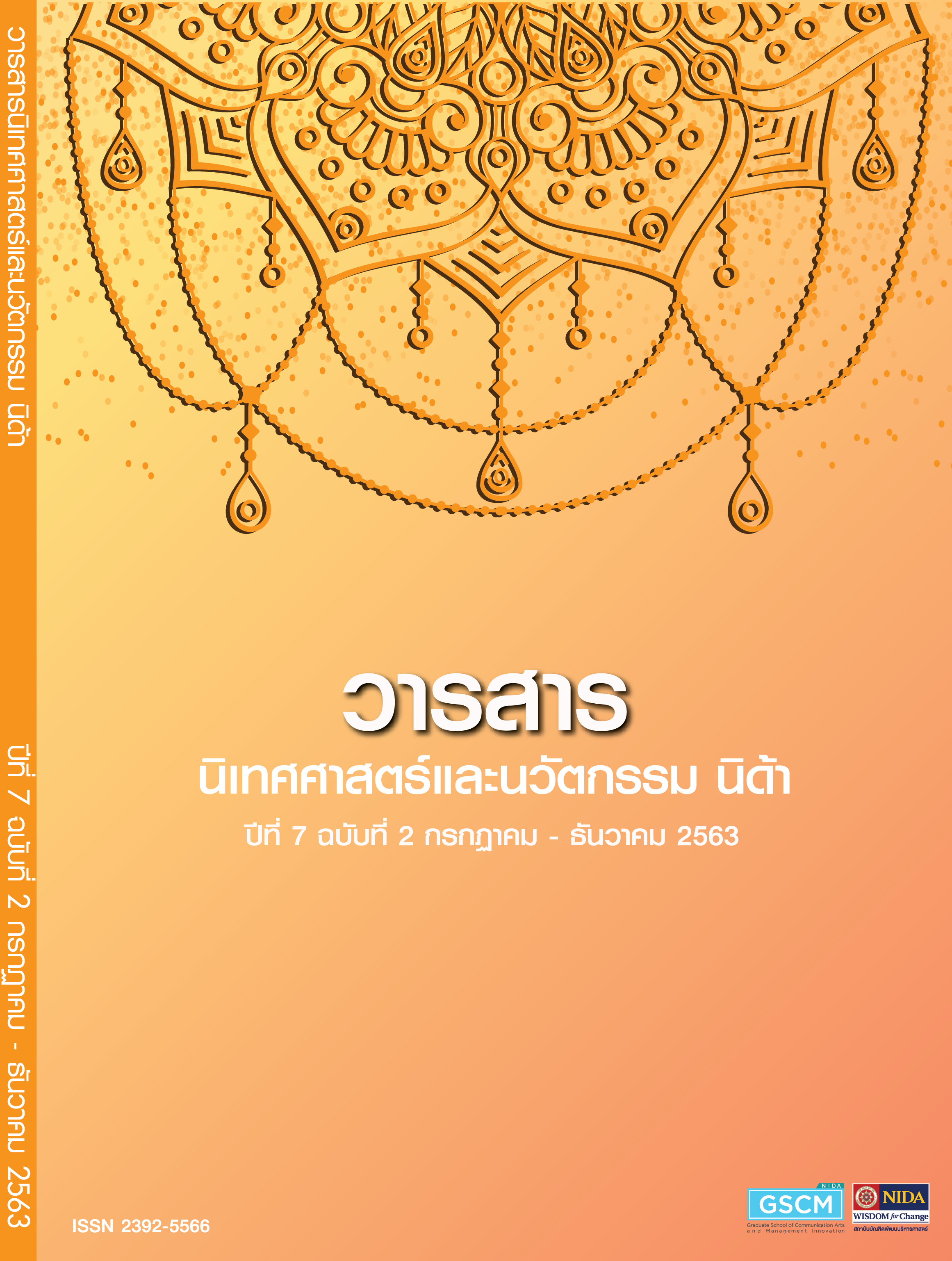Thai Political Marketing Strategy 2019 : Case study: Future Forward Party
Main Article Content
Abstract
Thai politics seen in a communication dimension provides another interesting study that can shed light on the viewpoints of political parties, their approach to message design, strategies on the use of media, and publicity policies. Invariably, they are all made with an interesting appeal in such forms as electioneering posters, election campaign events, canvassing, and especially communication in online social media. All this is a communication phenomenon with strategic designs adopted by political parties to show their identity, image and stance intended to win public interests and popularity. The ultimate aim is, of course, to win the election. In this paper, the author uses the Future Forward Party as a case study to analyze communication strategies during the election campaign, especially its political marketing strategies and media use, together with possible explanation for the phenomenon.
The finding reveals that the Future Forward Party makes a full use of political marketing as seen in its clear policy formulation, communication with its members, and unifying slogan, including its projection as a political party with a new outlook, focusing on the polarity of the new against old model, offering a space for members of younger generation who want to do away with the old political regime. It is a political party not afraid to negotiate with the ruling authority. It has a clear target group whose members are individuals with different messages or themes of their own. The membership is a network covering several regions by way of online social media. The online channel makes it possible for the party to gain greater visibility in the mainstream media. Importantly, the popularity surveys conducted by a number of agencies also contribute to its communication effectiveness in winning more popularity.
Article Details
ข้อความและความเห็นในวารสารนิเทศศาสตร์และนวัตกรรม นิด้า เป็นของผู้เขียนแต่ละท่าน มิใช่ของคณะนิเทศศาสตร์และนวัตกรรมการจัดการ สถาบันบัณฑิตพัฒนบริหารศาสตร์
References
ประชาชาติธุรกิจออนไลน์.(2562). “ธนาธร” เผยผลโพลอนาคตใหม่ ชี้มีความนิยมคว้า 50-75 ที่นั่ง วางเป้าทะลุร้อยเสียง. สืบค้นจาก https://www.prachachat.net/politics/news-282834 (เข้าถึงเมื่อ 20 มีนาคม 2562)
พรรคอนาคตใหม่. (2562). สืบค้นจาก https://futureforwardparty.org/about-fwp/our-policies.(เข้าถึงเมื่อ 18 มีนาคม 2562)
ราชกิจจานุเบกษา. (2561). พระราชบัญญัติประกอบรัฐธรรมนูญว่าด้วยการเลือกตั้งสมาชิกสภาผู้แทนราษฎรพ.ศ.2561. สืบค้นจาก http://www.ratchakitcha.soc.go.th/DATA/PDF/2561/A/068/40.PDF. (เข้าถึงเมื่อ 20 มีนาคม 2562)
ลลิตพรรณ นุกูลวัฒนวิชัย. (2559). การตลาดการเมือง: ศึกษาเปรียบเทียบกลยุทธ์การรณรงค์หาเสียงเลือกตั้ง ของพรรคประชาธิปัตย์ และพรรคเพื่อไทยในการเลือกตั้งผู้ว่าราชการกรุงเทพมหานคร พ.ศ. 2556. รัฐศาสตรมหาบัณฑิต คณะรัฐศาสตร์ จุฬาลงกรณ์มหาวิทยาลัย.
วิเชียร ช่วยหนู. (2557). การสื่อสารทางการเมือง ยุทธศาสตร์และกลยุทธ์ของนายชูวิทย์ กมลวิศิษฎ์.รัฐศาสตรมหาบัณฑิต คณะรัฐศาสตร์ จุฬาลงกรณ์มหาวิทยาลัย.
สำนักงานคณะกรรมการการเลือกตั้ง. (2562). ข้อมูลพรรคการเมืองที่ยังดำเนินการอยู่ ณ วันที่ 22 มกราคม 2562. สืบค้นจาก https://www.ect.go.th/ect_th/download/article/article_20190124073441.pdf (เข้าถึงเมื่อ 20 มีนาคม 2562)
สำนักวิชาการ สำนักงานเลขาสภาผู้แทนราษฎร. (2557). การตลาดเพื่อการเมือง:ชัยชนะของการเลือกตั้ง. สืบค้นจาก https://library2.parliament.go.th/ejournal/content_af/2557/feb2557-2.pdf. (เข้าถึงเมื่อ 20 มีนาคม 2562)


